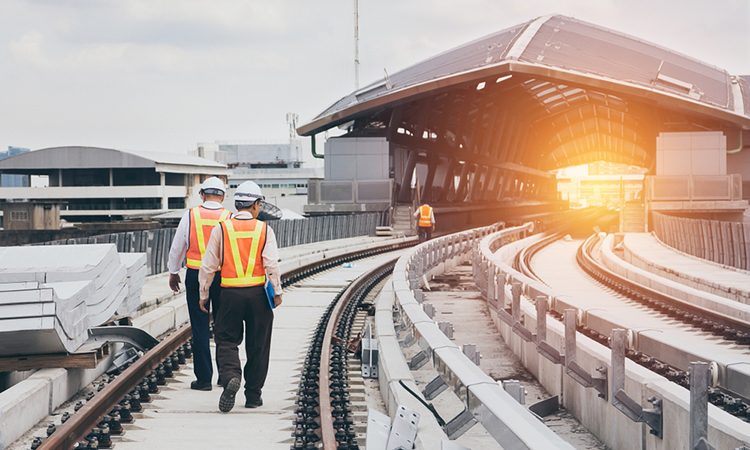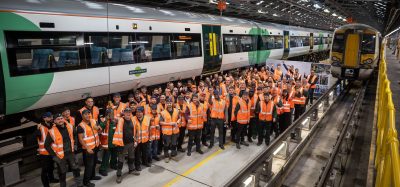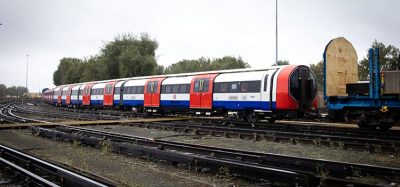Preparing your railway workforce for technological advances
Posted: 2 October 2024 | Indiana Lee - Business Journalist | No comments yet
Indiana Lee, Business Journalist, discusses the challenges and strategies for integrating advanced technologies into the rail industry while addressing workforce resistance and the need for ongoing education and cultural shifts.


Credit: Unsplash
The rail industry is more than 200 years old — but that doesn’t mean the technologies that support the industry are outdated. Railways have always advanced with the times, integrating new materials, fuels, safety features and more; it should hardly be surprising that railways around the world continue to adopt the latest technology to increase train efficiency, improve sustainability, reduce travel times and improve experiences for all. Technologies like automatic train operation (ATO) and positive train control (PTC), in particular, are seeing increasing rates of adoption, which can cut costs and enhance safety for workers and passengers alike.
However, despite the advantages of utilising advanced technology to improve railways, not everyone is all aboard. Railway workers can be resistant to changes to the systems they know, and this resistance can make updating railways slow, expensive, and ultimately ineffective. If rail companies want to take advantage of high-tech solutions, they need to prepare their workforce appropriately, beginning well before the change occurs and throughout the process of adapting to new practices. Here are a few ways rail companies might help workers transition to utilising new technologies that promise a better railway for everyone.
Understand why rail workers resist new technology
The average age of the workforce is about 39, but among railway workers specifically, the average age is closer to 45. One might wonder whether their age makes them more resistant to new technologies – but that is only a stereotype. Some studies have found that older workers are more willing to make changes that benefit their organisation or industry.
Rail companies should consider ways to attract their current workforce to new technology and encourage enthusiasm for technological advancements in the rail industry”
Instead of focusing on the age of their workforce, rail companies should consider the average level of education. A majority of rail workers have no education beyond high school, and their limited experience in a learning environment could impact their ability to gain new skills. Learning itself is a skill that requires practice; when workers don’t have much practise in learning, their confidence in their ability to learn may be low.
Hiring workers with higher levels of education could be a solution, but for many railway roles — which may have attributes unattractive to those with advanced degrees, like constant travel, manual labour, rural locations and more — it simply isn’t a viable option. Instead, rail companies should consider ways to attract their current workforce to new technology and encourage enthusiasm for technological advancements in the rail industry.
Commit to continued education
An innovative worker can identify and eliminate inefficiencies, develop new and valuable services, and generally deliver more value to their employer”
If a lack of education among workers is the primary issue, then the most obvious solution is offering workers access to education. Rail companies should consider offering robust continuing education programmes, providing workers with the training they need to feel comfortable and confident in high-tech rail environments.
Beyond training workers for specific new technologies, continued learning can have a handful of broader benefits that can help plug the skills gap. Professional development programmes are attractive perks, and companies that offer professional development opportunities tend to see an increase in high-calibre job applicants. Continued education programmes also tend to improve workforce retention, as workers develop a sense of loyalty when their employer invests time and energy in their skills. Both of these concerns should be top-of-mind for rail companies facing a looming labour shortage.
Even better, a more educated workforce can do more with the advanced technological tools with which they are provided. Learning can encourage creativity, and creativity spurs innovation. An innovative worker can identify and eliminate inefficiencies, develop new and valuable services, and generally deliver more value to their employer.


Incentivise technology use
For some workers, merely having the skills to use technology may not be enough to shift their behaviour on the job. Instead, rail companies may succeed in a time-tested method for integrating new tools and practices: incentivisation.
Many different types of incentives can encourage employees to start using a new tech. Monetary benefits are the simplest and can be exceedingly effective, but they can also be expensive and create a sense of entitlement amongst the workforce. Plus, companies need to be careful to adhere to existing laws and regulations when offering monetary bonuses. Besides cash, employers might consider creating social or points-based recognition programmes in which employees who utilise target technologies receive acknowledgement and non-monetary rewards for their behaviour.
Once workers adapt to using a new technology in the workplace, they typically continue using it without complaint. In fact, many will likely find that advanced tech offers useful advantages, like convenience or efficiency. Therefore, rail companies need only find the right incentive to get workers to begin using the tech in the first place.
Invest in a high-tech infrastructure
Companies need to make it easy, even intuitive, to integrate new technology into a worker’s workflow”
The more difficult it is to use new technology, the more resistant workers will be to use it. Therefore, companies need to make it easy, even intuitive, to integrate new technology into a worker’s workflow. This is true in every industry, but it is particularly true for railways. No longer is it acceptable for a rail company to add tech piecemeal; for advanced technology to take hold amongst the workforce, companies need to ensure that the entire infrastructure supports the use of the new tech.
On the one hand, this means that advanced technologies will require greater investment from rail companies, who must put effort into updating all networks, systems, processes and practices surrounding the tech. On the other hand, a high-tech infrastructure offers other benefits besides properly preparing the workforce. Updating infrastructure can help eliminate all outdated technologies, which makes the entire system more efficient — which often leads to cost savings that can outweigh the higher budget required for the more extensive technological shift.
Create a tech-focused company culture
Companies with reputations for harnessing cutting-edge technology tend to have workers who are willing and excited to adapt to new technology. A technology-driven corporate culture can help a company weather continuous technological advances because it will attract the type of rail worker who either already understands the latest technology or is enthusiastic about learning.
Of course, shifting a company’s culture is often easier said than done, but it’s necessary to address skills shortages. Leadership must make a concerted effort to build technology into a central pillar upholding corporate values and principles. Some ways to shift cultural focus onto tech include communicating early and often about imminent technological changes, integrating advanced technologies into every level, investing in tech-literate workers, and investing in education programmes.
Consider the future
Rail will not survive if it refuses to adopt the latest tech”
As an industry, rail will not survive if it refuses to adopt the latest tech. Advances in trends in urban living point toward a more systems and tech-driven future, both for daily life and for the supply chain. Among exciting advancements, this likely includes an increase in public transportation options. The railway industry must evolve to meet the shifting demands of its clientele and deliver on its promises of superior sustainability.
If the railway is to continue for another 200 years, it needs to continue changing with the times — which means rail workers need to be able to adapt, too. Fortunately, it doesn’t take much to help break down any resistance rail workers show toward new tech and prepare the workforce for the rail of the future.


Stay Connected with Global Railway Review — Subscribe for Free!
Get exclusive access to the latest rail industry insights from Global Railway Review — all tailored to your interests.
✅ Expert-Led Webinars – Gain insights from global industry leaders
✅ Weekly News & Reports – Rail project updates, thought leadership, and exclusive interviews
✅ Partner Innovations – Discover cutting-edge rail technologies
✅ Print/Digital Magazine – Enjoy two in-depth issues per year, packed with expert content
Choose the updates that matter most to you. Sign up now to stay informed, inspired, and connected — all for free!
Thank you for being part of our community. Let’s keep shaping the future of rail together!







